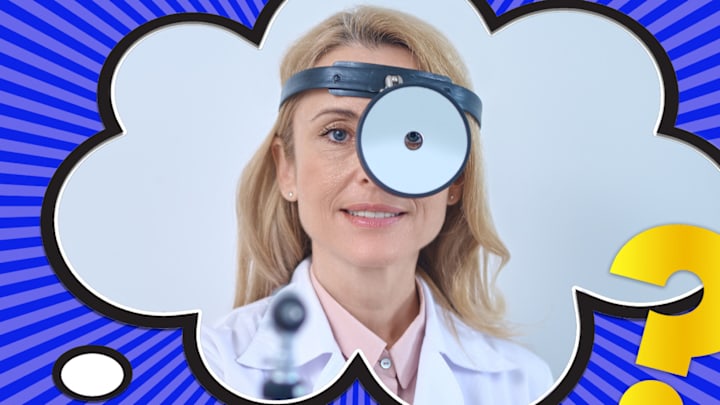Physicians have always had a distinctive physical profile, from their white coats to the stethoscope slung around their neck or tucked in a pocket. But one accessory seems to be a relic of old Three Stooges shorts and stock photos—the weird metal disc worn around their head. What's the function of this object, and why isn't it as common anymore?
The disc is known as a head mirror, and it helps otolaryngologists (ENTs, or ear, nose, and throat doctors) visualize various body cavities of interest. To use the device, the medical professional swings the mirror down over one eye, peering through the center hole. A light source is then shone on the mirror’s concave surface, reflecting and illuminating the dark hole in question. Essentially, the cavity can be visualized without having the light source obstructing the doctor’s view.
It takes practice for doctors to learn how to best position both the mirror and their own heads to reflect light properly and provide the best view. Because they were worn frequently, they became an easy way to provide a stereotypical depiction of a physician, although wearing one in the center of the forehead—as opposed to over one eye—is not really accurate.
Many modern-day physicians opt instead for fiber optic headlights, which provide illumination without being so difficult to perfect. Physicians trained on the conventional head mirror may decide to continue using it; residency programs still incorporate the mirror. When properly used, it can cast a very bright light.
The mirror was first conceived by a French medical professional named Levert to examine the larynx, a technique later modified by a German physician who used a wax candle for a light source. Johann Nepomuk Czermak is credited as the inventor of the head mirror as we know it today, presenting it to the medical community in 1858.
Like many medical tools, use of the head mirror is often dictated by circumstances. A headlight might be best to examine a squirming child, since it has its own light source and can be maneuvered more easily. If you’re dressing as a doctor for Halloween, however, a head mirror might be your best choice.
[h/t ENT Today]
